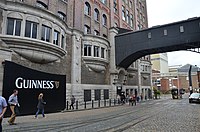
Beer is an alcoholic drink produced by the brewing and fermentation of starches from cereal grains—most commonly malted barley, although wheat, maize (corn), rice, and oats are also used. The fermentation of the starch sugars in the wort produces ethanol and carbonation. Most beer is brewed with hops, which add bitterness and act as a preservative and stabilising agent. Other flavouring agents, such as gruit, herbs, or fruits, may also be used. In commercial brewing, natural carbonation is often replaced with forced carbonation.
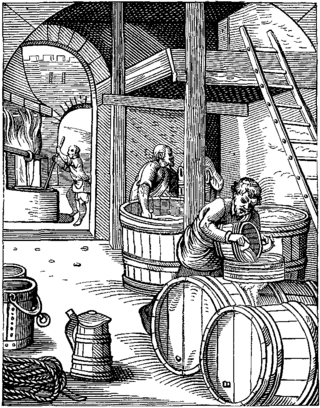
Brewing is the production of beer by steeping a starch source in water and fermenting the resulting sweet liquid with yeast. It may be done in a brewery by a commercial brewer, at home by a homebrewer, or communally. Brewing has taken place since around the 6th millennium BC, and archaeological evidence suggests that emerging civilizations, including ancient Egypt, China, and Mesopotamia, brewed beer. Since the nineteenth century the brewing industry has been part of most western economies.

Real ale is the name coined by the Campaign for Real Ale (CAMRA) for beer that is "brewed from traditional ingredients, matured by secondary fermentation in the container from which it is dispensed, and served without the use of extraneous carbon dioxide".

Stout is a dark, top-fermented beer style which includes dry stout, oatmeal stout, milk stout and imperial stout.

Stella Artois is a pilsner beer, first brewed in 1926 by Brouwerij Artois in Leuven, Belgium. In its original form, the beer is 5.2 per cent ABV, the country's standard for pilsners. The beer is also sold in other countries including the UK, Ireland, Canada and Australia, where it has a reduced ABV. Stella Artois is owned by Interbrew International B.V. which is a subsidiary of the world's largest brewer, Anheuser-Busch InBev SA/NV.

Homebrewing is the brewing of beer or other alcoholic beverages on a small scale for personal, non-commercial purposes. Supplies, such as kits and fermentation tanks, can be purchased locally at specialty stores or online. Beer was brewed domestically for thousands of years before its commercial production, although its legality has varied according to local regulation. Homebrewing is closely related to the hobby of home distillation, the production of alcoholic spirits for personal consumption; however home distillation is generally more tightly regulated.

Smithwick's is an Irish red ale-style beer. Smithwick's brewery was founded in Kilkenny in 1710 by John Smithwick and run by the Smithwick family of Kilkenny until 1965, when it was acquired by Guinness, now part of Diageo. The Kilkenny brewery was shut down in 2013 and production of all Smithwick's and Kilkenny branded beers moved to Dublin; parts of the old brewery were later converted into a "visitor experience".

A keg is a small cask.
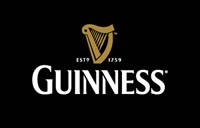
St. James's Gate Brewery is a brewery founded in 1759 in Dublin, Ireland, by Arthur Guinness. The company is now a part of Diageo, a company formed from the merger of Guinness and Grand Metropolitan in 1997. The main product of the brewery is Draught Guinness.

Beer has been brewed in England for thousands of years. As a beer brewing country, it is known for top fermented cask beer which finishes maturing in the cellar of the pub rather than at the brewery and is served with only natural carbonation.

Arthur Guinness was an Irish brewer, entrepreneur, and philanthropist. The inventor of Guinness beer, he founded the Guinness Brewery at St. James's Gate in 1759.

Beer is one of the oldest human-produced drinks. The first chemically confirmed barley-beer – from the area of Mesopotamia, part of modern-day Iraq – dates back to the 5th millennium BCE. The written history of ancient Egypt and Mesopotamia records the use of beer, and the drink has spread throughout the world; a 3,900-year-old Sumerian poem honouring Ninkasi, the patron goddess of brewing, contains the oldest surviving beer-recipe, describing the production of beer from barley bread, and in China, residue on pottery dating from around 5,000 years ago shows that beer was brewed using barley and other grains.
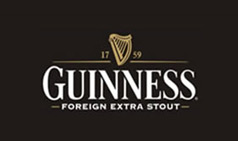
Guinness Foreign Extra Stout (FES) is a stout produced by the Guinness Brewery, an Irish brewing company owned by Diageo, a drinks multinational. First brewed by Guinness in 1801, FES was designed for export, and is more heavily hopped than Guinness Draught and Extra Stout, which gives it a more bitter taste, and typically has a higher alcohol content. The extra hops were intended as a natural preservative for the long journeys the beer would take by ship.

Kilkenny is a nitrogenated Irish cream ale from Guinness, which originated in Kilkenny, Ireland. The brand is produced and managed by Guinness owner, Diageo. It is available in draught, bottles and cans. It is brewed in Ireland. Kilkenny is similar to Smithwick's Draught; however, it has less hop finish, and it has a nitrogenated cream head similar to Guinness. The 'Kilkenny' name was originally used during the 1980s and 1990s to market a stronger version of Smithwick's for the European and Canadian markets due to difficulty in pronunciation of the word 'Smithwick's'. It now refers to a similar yet distinct beer.
The Great Northern Brewery, on the Carrick Road, Dundalk, County Louth, was an Irish brewery. It was home to Harp Lager, and was formerly owned by Diageo. In 2015 the brewery closed, and production of Harp Lager and other products was moved to St. James's Gate Brewery in Dublin. The site has since been bought by John Teeling, and converted for operation as a distillery, the Great Northern Distillery.

Guinness is an Irish dry stout that originated in the brewery of Arthur Guinness at St. James's Gate, Dublin, Ireland, in 1759. It is now owned by the British-based multinational alcoholic beverage maker Diageo. It is one of the most successful alcohol brands worldwide, brewed in almost 50 countries, and available in over 120. Sales in 2011 amounted to 850,000,000 litres. In spite of declining consumption since 2001, it is the best-selling alcoholic drink in Ireland where Guinness & Co. Brewery makes almost €2 billion worth of beer annually.

A brewery or brewing company is a business that makes and sells beer. The place at which beer is commercially made is either called a brewery or a beerhouse, where distinct sets of brewing equipment are called plant. The commercial brewing of beer has taken place since at least 2500 BC; in ancient Mesopotamia, brewers derived social sanction and divine protection from the goddess Ninkasi. Brewing was initially a cottage industry, with production taking place at home; by the ninth century, monasteries and farms would produce beer on a larger scale, selling the excess; and by the eleventh and twelfth centuries larger, dedicated breweries with eight to ten workers were being built.

Beer is often made from barley malt, water, hops and yeast and so is often suitable for vegans and vegetarians. Some beer brewers add finings to clarify the beer when racking into a barrel. Finings can include plant-derived products, like Irish moss, or animal-derived products, like isinglass and gelatin.

Porter is a style of beer that was developed in London, England in the early 18th century. It is well-hopped and dark in appearance owing to the use of brown malt. The name is believed to have originated from its popularity with porters.
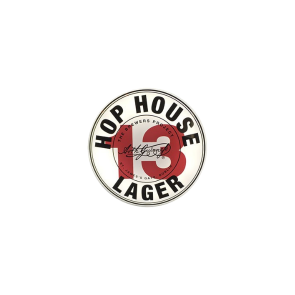
Hop House 13 is an Irish lager produced by the Guinness Brewery, an Irish brewing company owned by Diageo.

